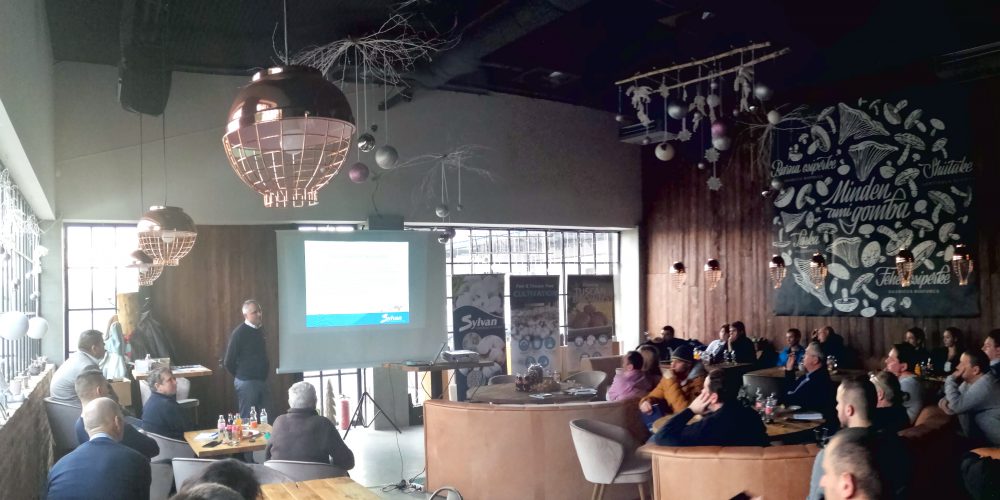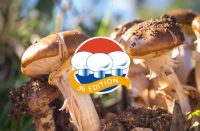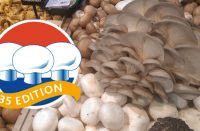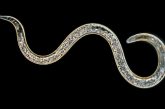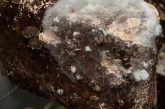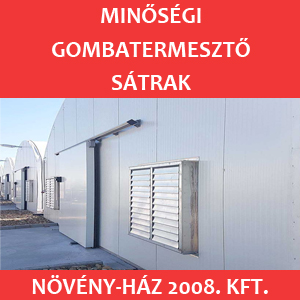Sylvan Hungária Zrt. And Szent István University’s Department of Vegetable and Mushroom Growing held a workshop on the correct use of BASF products (Sporgon, Nemasys M, Harvinta) in mushroom growing. Major companies and producers of the Hungarian mushroom industry were present at the event. The aim of the program was to present the most problematic pests, pathogens and pesticides used in mushroom production.
From presentation of Dr. András Geösel, (Associate Professor, Head of Department of Vegetable and Mushroom Growing at Szent István University) we got to know the pathogens presenting the greatest growing problems, which – unfortunately – not need to be introduced to most growers. He talked about the difficulty of recognizing the rapidly and effectively growing parasitic cobweb molds, the causes of dry and wet bubble disease, and the direct and indirect damage of different flies in mushroom cultivation. Download presentation by clicking HERE.
Zsolt Veres, BASF’s local sales director, briefly described the company’s goals, tasks and the pesticides they developed and marketed for mushroom growing. Download presentation by clicking HERE.
Finally, Péter Gábris, salesman of Sylvan spoke about the possibilities of controlling the pests known from András Geösel’s presentation. He described the mechanism and usage of Sporgon 50WP, which known and used by many growers, and the usage of Nemasys M, which is an effective entomopathogenic nematode product against flies. He also presented a new fungicide, called Harvinta, which has recently presented to the market, and can be a hopes for producers in the fight against cobweb mold. We also write about Harvinta earlier, and as we have described, the product is used alone or in combination with Sporgon to prevent cobweb infection. In combination therapy, Sporgon should be applied conventionally at concentration of 1 g/litre/m2 after first irrigation, and Harvinta sprayed to the bed at the last irrigation, before cooling, 1 ml/m2, dissolved in 150 ml of water. Download presentation by clicking HERE. Thanks to the organizers for this great afternoon!


